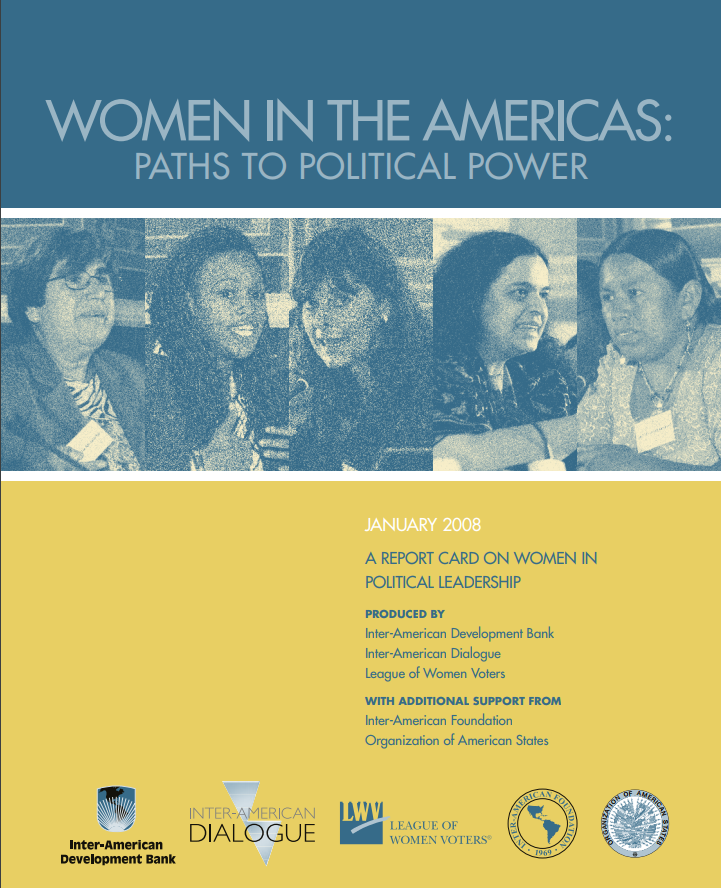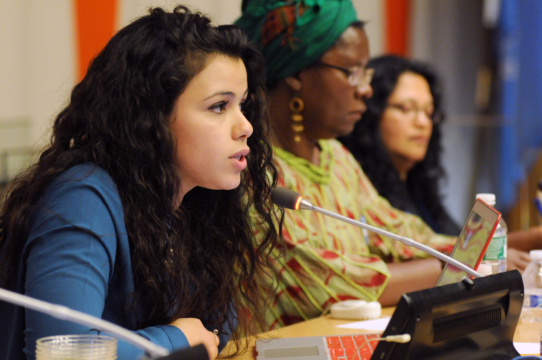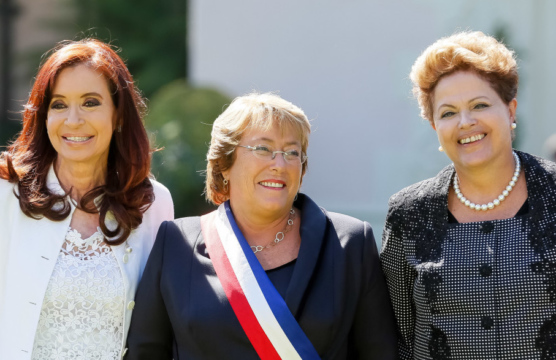What Roles are Women Playing in Mexico’s Drug War?
What roles are women playing in Mexico’s brutal drug trafficking war?
This article was originally published on January 17, 2008 by the Miami Herald under the title “Women in the Americas.”
Women in Latin America and the Caribbean are making political strides. Though long impenetrable, glass ceilings over the halls of power have begun to crack.
Inroads are particularly noteworthy at the national level. Across the region, women in cabinet positions increased to 21 percent in 2006 from 14 percent in 2000. Over the same period, the proportion of women in national legislatures rose to 19 percent from 14 percent.
In 2006 and 2007, three women became chief executives: Chile's Michelle Bachelet, Jamaica's Portia Simpson-Miller and Argentina's Cristina Fernández de Kirchner. In September 2007, however, the People's National Party lost the parliamentary elections and Simpson-Miller her position as prime minister.
Women in the Americas: Paths to Political Power — a report produced by the Inter-American Development Bank, the Inter-American Dialogue and the League of Women Voters — reminds us that eleven women had served as presidents or prime ministers prior to 2006. Eight were interim or short-term leaders and the other three served full terms.
Two of these three — Nicaragua's Violeta Barrios de Chamorro (1990-1997) and Panama's Mireya Moscoso de Arias (1999-2004) — crossed the political threshold thanks to their husbands. While true, I take issue with this commonplace observation about women in politics, which the report at hand echoes.
Barrios de Chamorro, for example, rose to prominence after the 1978 assassination of Pedro Joaquín Chamorro, her husband. After Anastasio Somoza's downfall, she joined the Sandinista government but resigned her charge in April 1980. From then until she defeated Daniel Ortega in the 1990 election, Barrios de Chamorro opposed the Sandinistas. Unlike Ortega (then and now), she governed as the president of all Nicaraguans. Why should it matter how she entered politics?
Would the current US president have made such a meteoric rise — from the Texas governorship in 1995 to the White House in 2001 — had his last name been other than Bush? Still, if his presidency had turned out differently, the question wouldn't matter as much. If Hillary Clinton becomes the Democratic Party's nominee and she wins in November, we should judge her presidency on its own ground, for better or for worse. Unlike Bush, Clinton has a public record spanning 35 years.
Why have women politicians made such strides in Latin America and the Caribbean? Women in the Americas specifically addresses three sets of factors:
Gender quotas — established by laws requiring a certain percentage of female candidacies to national legislatures — have modestly succeeded. In 1991, Argentina became the first country in the Americas to pass such a law. Since then, 12 others have followed suit. Quota effectiveness depends on the target percentage, the placement mandate, i.e., that women candidates be placed in winnable ballot positions, and the strength of enforcement mechanisms.
Argentina, Costa Rica and Mexico all have high quota targets, favorable placement mandates and strong enforcement mechanisms. Unsurprisingly, women have won more seats in their legislatures. In contrast, Panama, Venezuela and Brazil — with lower quota targets, no placement mandates and weak or no enforcement mechanisms — have a lower representation of women in the legislative branch.
Across the region, women have not done so well in becoming mayors (just over six percent) and governors (11 percent). In the United States, where local offices can be stepping stones to national political office, women entered sub-national governments more rapidly. In Latin America, political and fiscal decentralization only happened in the past two decades, and only then did local offices became elected positions. Gender-quota laws, moreover, have targeted legislatures.
Women in the Americas presents a rich overview of women in politics.
What roles are women playing in Mexico’s brutal drug trafficking war?
How are women faring in Latin America? Where has progress been made and how has that been achieved?
Would this be a more compassionate, more peaceful planet if more of it were ruled by women?


